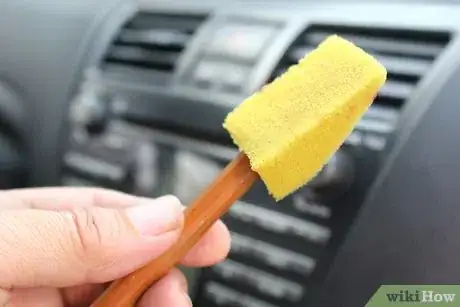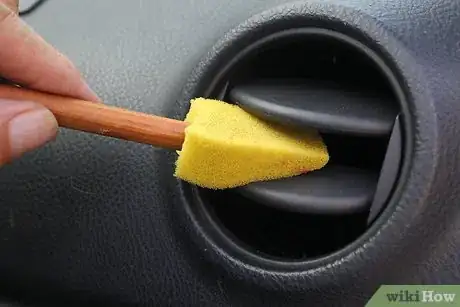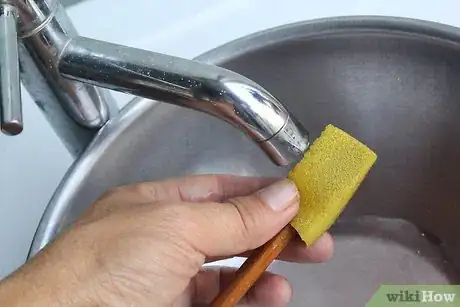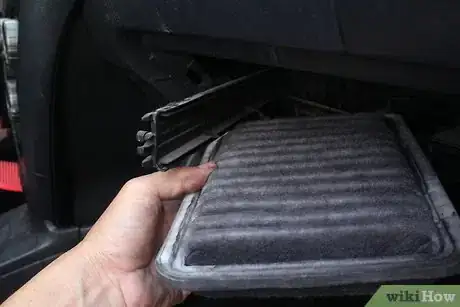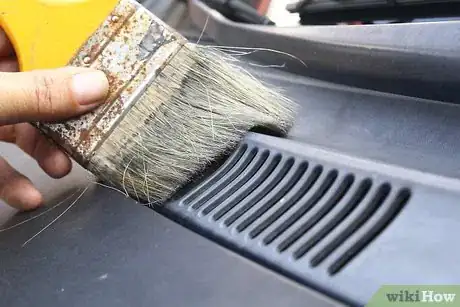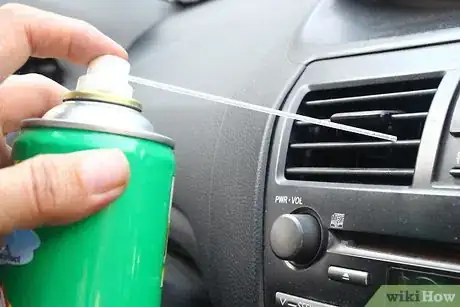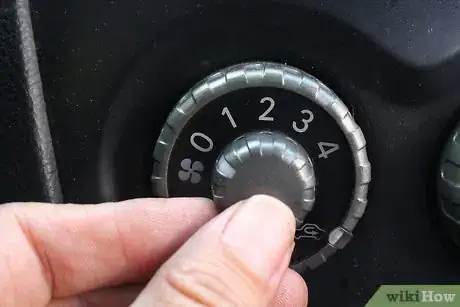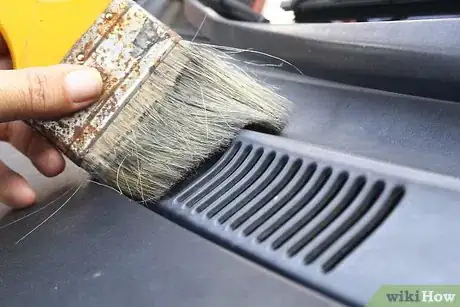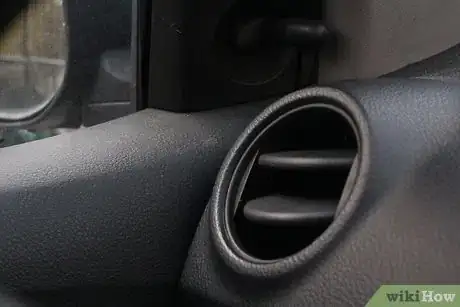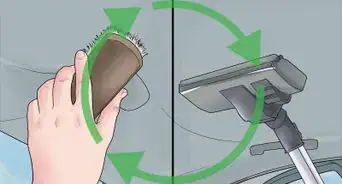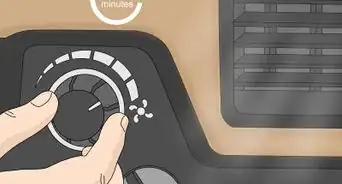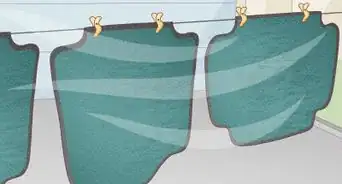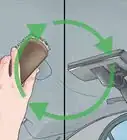This article was co-authored by Tom Eisenberg. Tom Eisenberg is the Owner and General Manager of West Coast Tires & Service in Los Angeles, California, a family-owned AAA-approved and certified auto shop. Tom has over 10 years of experience in the auto industry. Modern Tire Dealer Magazine voted his shop one of the Best 10 Operations in the Country.
There are 15 references cited in this article, which can be found at the bottom of the page.
This article has been viewed 141,023 times.
The narrow spaces between a car’s air conditioning vents can be difficult to clean using a cloth. However, inexpensive foam paintbrushes make the job quick and easy. Clean your A/C vents once every month or two, or more often if you notice they become dusty. If you smell a moldy odor when you turn your A/C on, clean your vent system using a disinfectant spray cleaner. To prevent mold growth, periodically dry out your vent system by blowing your fan on max with the A/C off, and be sure to clear away any debris that collects around the exterior air intakes.
Things You Should Know
- Use foam paintbrushes to easily clean between the slats of your car's AC vents.
- Make a cleaning solution for your AC vents with equal parts warm water and vinegar.
- Spray inside the vents with an enzyme cleaner to disinfect them.
Steps
Cleaning Your Vents Using a Foam Paintbrush
-
1Purchase a set of foam paintbrushes. Foam paintbrushes are perfect for getting deep into the spaces between your air conditioner vents’ slats. They’re inexpensive and available at your nearest home improvement, craft, or dollar store. You could also purchase a set online.[1]
-
2Create a homemade cleaning solution. Combine equal parts of warm water and white vinegar. Try using lemon-scented cleaning vinegar if the smell bothers you. If you can’t find lemon-scented vinegar, add a teaspoon of lemon juice to your cleaning solution.Advertisement
-
3Insert the foam brush between each vent slat. Dab a foam brush in your cleaning solution and press it between your vent slats to remove dust and grime. Rinse your brush as needed to remove the debris it accumulates, or simply use another brush. Finish by wiping the vents down with a dry brush if you’ve left any excess cleaning solution.[2]
-
4Rinse and dry used brushes. Wash your used brushes with warm water and a dab of dish detergent. Squeeze them out and rinse well to remove excess soap. Let them dry, place them in a plastic baggie, and store them in your glove compartment for quick use.[3]
Cleaning the A/C Vent System
-
1Replace your car’s cabin air filter. Most newer cars have an easily replaceable air filter that you can access from inside the cabin. You should consult your vehicle’s manual for specific instructions about how to remove and replace it.[4]
- In many newer models, including Hondas and Toyotas, you’ll start by lowering the glove compartment by unfixing the tabs that keep it in place.[5] You might have to remove screws that hold a panel in place just below the glove compartment.[6] On GM sedans, the filter is located in a casing beneath the dashboard on the driver's side.[7]
- After lowering the glove compartment or removing the panel just beneath it, locate the clip that secures the air filter cover. Pinch the clip to release and remove the cover.[8]
- Pull the old filter straight out of its housing and replace it with a new one.[9]
- Aim to replace the filter every 15,000 miles (24,000 km) you drive.[10] Consider changing it more frequently if you live in a dense urban area or in an environment with lots of dust.[11]
-
2Clear off and spray the air intake vents. The air intakes are on the exterior of the car around the windshield cowling.[12] Brush away dead leaves or any other accumulated debris using a broom or handheld dust brush. Spray inside the vents with a sanitizing enzymatic cleaner.[13]
- Enzymatic disinfectants will help kill mold or fungi growing in your vent system, while air fresheners will just act as a perfume. Go for a cleaner labeled “mold and mildew fighting,” “disinfectant” or “antibacterial,” as these sprays will contain an enzyme.
-
3Spray all vents with disinfectant cleaner. Close your car doors and windows. Make sure the car is off and keys are out of the ignition. Spray liberally inside all of your car’s interior vents with the enzymatic cleaner.[14]
- Consult your car’s manual to make sure you’ve located all of the A/C vents.
-
4Start the engine and set the air conditioner to max. After you’ve sprayed all of your vents, start your car’s engine. Set both the air conditioner and fan blower to max. After about ten minutes, turn your A/C off, open all the car doors, and let the fan blow for another five minutes.[15]
-
5Have your car serviced. If the smell persists, you might need to have your A/C serviced. For persistent moldy smell, consult your mechanic or dealership about replacing your evaporator core. Other smells, like gas or antifreeze, could indicate system leaks.[16]
- Depending on if any parts need to be flushed or replaced, the cost could be between $300 and $2000 (US).
Preventing Mold Growth
-
1Turn the air conditioner off before reaching your destination. Make it a habit to turn your air conditioner off while letting the fan blow a few minutes before you reach any destination. Try to do this about three to five minutes before turning off your engine. Letting the fan blow a few minutes after turning off the A/C will help dry your vent system, preventing mold growth.[17]
-
2Keep the air intakes clear of leaves and other debris. Never let anything collect around your A/C intakes. Brush away debris weekly, or more often if necessary. Leaves and other debris that accumulates around the windshield cowling are a leading cause of mold growth in the A/C vent system.[18]
-
3Run the blower without the air conditioner on periodically. Every two or three months, choose a warm, dry day to clear out your A/C vents using the fan blower. Open all the car doors, make sure the A/C is off, and turn the blower on max. Regularly drying out your vent systems using this technique will prevent future mold growth.[19]
Expert Q&A
Did you know you can get expert answers for this article?
Unlock expert answers by supporting wikiHow
-
QuestionCan I clean my own AC vents in my car?
 Tom EisenbergTom Eisenberg is the Owner and General Manager of West Coast Tires & Service in Los Angeles, California, a family-owned AAA-approved and certified auto shop. Tom has over 10 years of experience in the auto industry. Modern Tire Dealer Magazine voted his shop one of the Best 10 Operations in the Country.
Tom EisenbergTom Eisenberg is the Owner and General Manager of West Coast Tires & Service in Los Angeles, California, a family-owned AAA-approved and certified auto shop. Tom has over 10 years of experience in the auto industry. Modern Tire Dealer Magazine voted his shop one of the Best 10 Operations in the Country.
Auto Technician
Things You’ll Need
- Foam paintbrushes
- White vinegar or lemon-scented cleaning vinegar
- Broom or dust brush
- Enzymatic spray cleaner
- Replacement air filter (suited for your car’s make and model)
References
- ↑ https://blog.nationwide.com/how-to-clean-your-car/
- ↑ https://www.youtube.com/watch?v=oMKhi1R22w0&feature=youtu.be&t=23
- ↑ https://www.youtube.com/watch?v=oMKhi1R22w0&feature=youtu.be&t=36
- ↑ http://removeandreplace.com/2013/05/25/how-to-get-the-bad-smell-out-of-car-ac-vent-system-diy/
- ↑ Tom Eisenberg. Auto Technician. Expert Interview. 26 July 2019.
- ↑ https://www.youtube.com/watch?v=bml8dletNbk&feature=youtu.be&t=74
- ↑ http://www.popularmechanics.com/cars/how-to/a99/1272511/
- ↑ https://www.youtube.com/watch?v=5ovV0gGjC50&feature=youtu.be&t=42
- ↑ https://www.youtube.com/watch?v=5ovV0gGjC50&feature=youtu.be&t=48
- ↑ Tom Eisenberg. Auto Technician. Expert Interview. 26 July 2019.
- ↑ https://www.cars.com/articles/2013/05/whats-a-cabin-air-filter-and-when-should-you-replace-it/
- ↑ http://www.simple-car-answers.com/Car-Smells.html
- ↑ https://www.youtube.com/watch?v=Es6EQNPXb2c&feature=youtu.be&t=216
- ↑ https://www.youtube.com/watch?v=Es6EQNPXb2c&feature=youtu.be&t=194
- ↑ https://www.youtube.com/watch?v=Es6EQNPXb2c&feature=youtu.be&t=203
- ↑ http://www.carsdirect.com/car-maintenance/weird-car-air-conditioner-smell-what-it-means-and-how-to-fix-it
- ↑ http://www.carsdirect.com/car-maintenance/weird-car-air-conditioner-smell-what-it-means-and-how-to-fix-it
- ↑ http://www.simple-car-answers.com/Car-Smells.html
- ↑ http://www.simple-car-answers.com/Car-Smells.html
About This Article
You should clean your car AC vents once every month or two to keep your car clean and prevent mold build-up. It can be difficult to fit a cloth into the narrow spaces of your vents, so try using a foam paintbrush to pick up dust. Create a cleaning solution of equal parts warm water and white vinegar. Then, dip your brush into the solution and insert it between each vent slat. For a deeper clean, turn off your car, then liberally spray disinfectant cleaner into all the interior vents. After you’ve sprayed the vents, start the engine and set the air conditioner to the max for about 10 minutes. To learn how to prevent mold growth in your car, read on!
